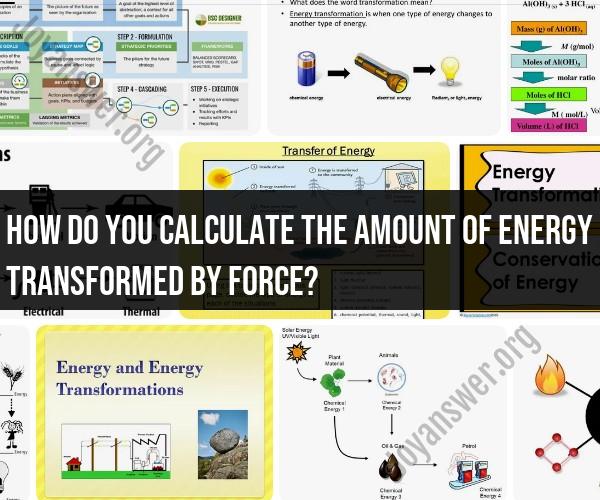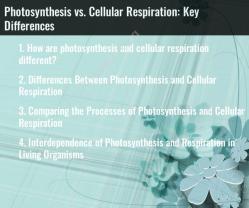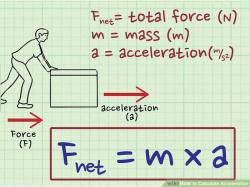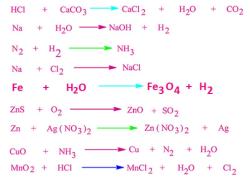How do you calculate the amount of energy transformed by force?
The amount of energy transformed by a force can be calculated using the work-energy theorem, which relates the work done by the force to the change in kinetic energy of an object. The formula to calculate work done by a force is:
Where:
- represents the work done (measured in joules, J).
- is the magnitude of the force applied (measured in newtons, N).
- is the displacement of the object in the direction of the force (measured in meters, m).
- is the angle between the direction of the force and the direction of the displacement (measured in degrees or radians).
Here's how to calculate the amount of energy transformed by force using this formula:
Determine the magnitude of the force () applied to the object. This force can be a pushing or pulling force, and it should be measured in newtons (N).
Determine the displacement () of the object in the direction of the force. The displacement should be measured in meters (m). Make sure the direction of the displacement aligns with the direction of the force. If the force and displacement are in the same direction, the angle is 0 degrees, and , simplifying the calculation.
Calculate the angle () between the force and displacement vectors, if needed. This step is crucial if the force is not applied in the exact direction of motion. You'll need to know the angle in degrees or radians.
Use the formula to calculate the work done by the force. The result will be in joules (J), which is a measure of energy.
The work done by the force represents the amount of energy transformed or transferred by that force. If the work is positive, it means the force transferred energy to the object, increasing its kinetic energy. If the work is negative, the force removed energy from the object, decreasing its kinetic energy. If the work is zero, there was no net energy transformation, meaning the force may have been applied perpendicular to the direction of motion.
This calculation is commonly used in various physics applications, such as calculating the work done by a lifting force, frictional force, or any force acting on an object to determine its change in energy.
Calculating Energy Transformation: Methods for Measuring Force-Related Energy Changes
There are two main methods for calculating energy transformation related to force:
- The work-energy theorem: The work-energy theorem states that the net work done on an object is equal to the change in its kinetic energy. This means that the work done by a force can be used to calculate the change in kinetic energy of an object.
- Conservation of energy: The law of conservation of energy states that energy cannot be created or destroyed, only converted from one form to another. This means that the total energy of a system remains constant, even when forces are acting on the system.
To calculate the energy transformation related to force using the work-energy theorem, you can use the following equation:
W = ΔKE
where:
- W is the net work done on the object
- ΔKE is the change in the kinetic energy of the object
To calculate the energy transformation related to force using conservation of energy, you can use the following equation:
E_initial = E_final
where:
- E_initial is the total energy of the system at the initial state
- E_final is the total energy of the system at the final state
The Physics of Energy Conversion: Determining Energy Transformed by Force
When a force acts on an object, it can do work on the object. This work can be used to change the energy of the object. For example, if you push a car, you are doing work on the car. This work increases the kinetic energy of the car.
The amount of energy transformed by force depends on the magnitude of the force and the distance over which the force acts. The greater the magnitude of the force or the greater the distance over which the force acts, the more energy is transformed.
The type of energy that is transformed by force also depends on the nature of the force. For example, the force of gravity can transform potential energy into kinetic energy. The force of friction can transform kinetic energy into thermal energy.
Work and Energy: The Relationship Between Force and Energy Transformation
Work and energy are two closely related concepts in physics. Work is the transfer of energy from one object to another due to a force acting over a distance. Energy is the ability to do work.
The work-energy theorem states that the net work done on an object is equal to the change in its kinetic energy. This means that the work done by a force can be used to calculate the change in kinetic energy of an object.
The law of conservation of energy states that energy cannot be created or destroyed, only converted from one form to another. This means that the total energy of a system remains constant, even when forces are acting on the system.
In conclusion, work and energy are two fundamental concepts in physics that are related to force transformation. The work-energy theorem and conservation of energy can be used to calculate the energy transformation related to force.












